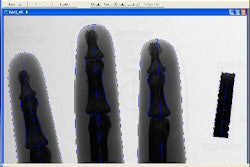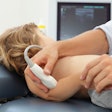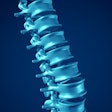WASHINGTON, DC - Magnetic resonance imaging is increasingly popular in sports medicine practices, but how often does it change what the orthopedist would do based on clinical exams and radiographs alone?
Not that often, according to a new study presented this week at the 2005 meeting of the American Academy of Orthopaedic Surgeons (AAOS).
Dr. Jeffrey Rosen and colleagues from the department of orthopedic surgery at New York University in New York City looked prospectively at 249 consecutive patients for whom MRI of the knee or shoulder was ordered, and followed them until a final diagnosis was made or surgery was performed.
Two orthopedic surgeons examined all the patients and recorded a working diagnosis prior to obtaining an MRI scan, or reviewing any MRIs that had been done previously. The average length of symptoms prior to MRI referral was 10.9 months.
Sixty-one patients were seen for shoulder problems, and 188 for knee issues. The working diagnoses for shoulder patients included 30 full or partial rotator cuff tears, 10 impingements, and seven labral tears. Knee diagnoses included 108 meniscal tears, 59 posterior cruciate ligament injuries, and 37 anterior cruciate ligament injuries.
Even before ascertaining whether the MRIs made a difference, the researchers got a glimpse of likely overutilization based on the reasons given for ordering the scans.
In 119 cases the MRIs were ordered to confirm diagnosis, while in 58 cases the patient's desire for an MRI played a role. An unclear diagnosis was the rationale in just 60 cases, and preoperative planning was cited for 30 MRI orders. In two cases, MRIs were required by insurance companies for proof of diagnosis.
Physician self-referral was not a factor in the study, as all MR imaging was performed outside of the sports medicine group. As an aside, the researchers reported that the orthopedic surgeons' readings of the MRIs matched the radiologists' in 90% of the cases.
The working diagnosis was changed by MRI in only 16% of the 249 cases -- a finding that wasn't surprising given that the physicians themselves reportedly felt the MRI was unnecessary in 77% of their cases.
The researchers concluded that MRI is overutilized for knee and shoulder disorders in sports medicine practice, noting that such imaging has increased 168% over the last decade.
"In the vast majority of cases, a skilled examiner can accurately form a working diagnosis and treatment plan without the use of MRI," they concluded. In addition, they noted that earlier studies have found that MRI isn't cost-effective when a large majority of patients end up having diagnostic arthroscopy as well.
"We'd like to see people use MRI more cautiously," said Dr. Mehul Shah, a fourth-year resident who worked on the NYU study. "If you have a strong clinical suspicion, treat them appropriately and see if their symptoms improve without the MRI."
By Tracie L. Thompson
AuntMinnie.com staff writer
February 24, 2005
Related Reading
3-tesla MR enhances, and likely advances, orthopedic imaging, February 22, 2005
Acromion evaluation proves tricky for x-rays and MRI, February 21, 2005
Standard and extremity MR bear brunt of shoulder imaging, November 17, 2004
Meniscal MRI studies highlight axial advantages, radial tear rates, August 28, 2004
MRI pinpoints meniscal tears, proves less valuable for knee trauma, January 9, 2003
MR arthrography not always needed in post-operative knees, February 13, 2002
Copyright © 2005 AuntMinnie.com



















